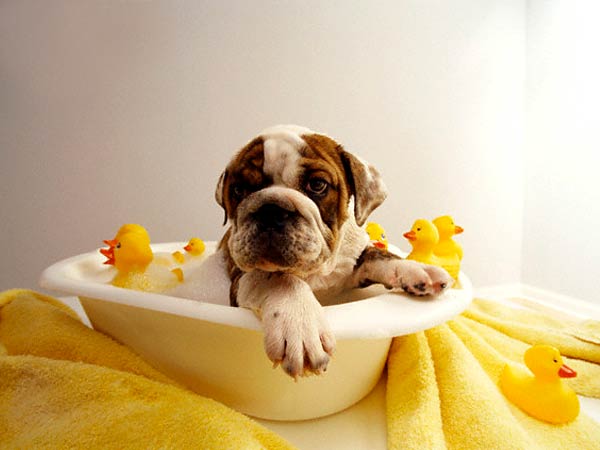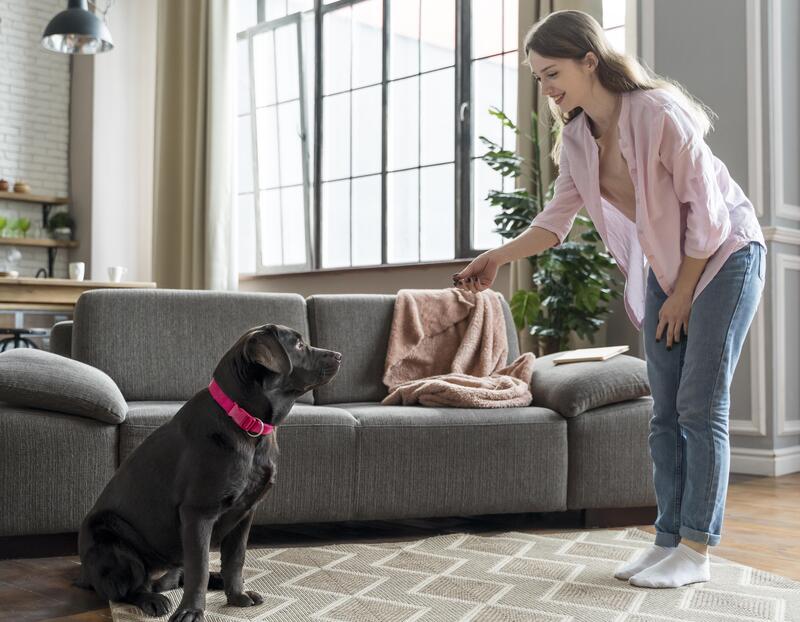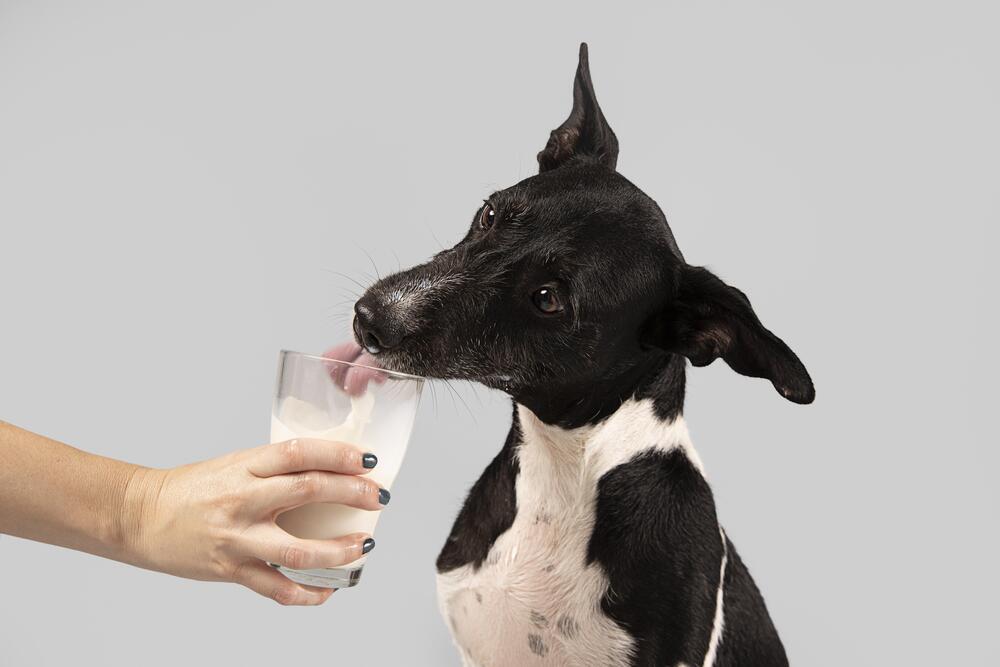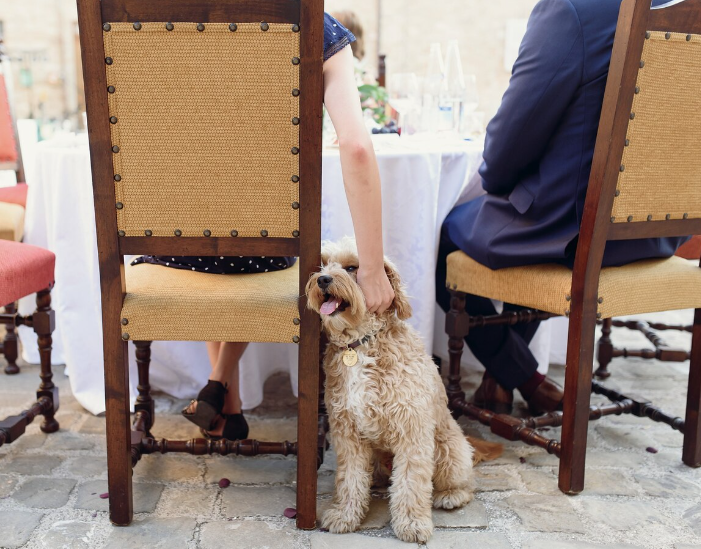
Walking outside, sniffing around, exploring the surroundings, rolling around in grass, dirt and mud - we bet that these are your dog’s favorite activities along with eating. How often does your paw friend come home muddy and smelling bad? Bathing their paw friends is an activity every owner is engaged in. It may sound quite simple, but there are many things that you need to consider before bathing your canine.
Why Should You Bathe Your Dog?
It is recommended that dog owners wash their furry friends. Maintaining your dog’s coat clean and preventing him/her from giving off unpleasant odor, are the main reasons for most dog owners to bathe their furry friends. However, other positive effects of bathing are killing parasites and reducing the itching effect that occurs after insect bites. Moreover, when the fur is wet and stays flat, you will be able to detect injures, wounds and bumps, that may have stayed hidden due to the fur throughout the day. In general, you will be able to check the whole body of your dog and take immediate actions if you notice an issue.
What Factors Do You Need to Consider Prior to Bathing?
How often our beloved paw friends need to have a bath depends on a lot of factors like their breed, coat type, activity level, health conditions, surroundings...etc.
Coat type
You may think that all short-coated breeds do not require regular bathing. If you are an owner of a Short-haired Dachshund or a German Short-haired Pointer, you may consider yourself lucky. These breeds do not require regular bathing (except when they get really dirty while outside) and you can engage in this activity once every 2-3 months. However, you need to remember that there are exceptions to this rule, based on how oily the dog skin is. Breeds like the Chinese Crested Dog, the Peruvian Hairless Dog, the Xoloitzcuintli or the Basset Hound, may need bathing every week or fortnightly. They tend to have oily skin and lack protection due to their hairless coat. Hence, they will benefit from regular bathing as it will prevent their skin from building too much oil. However, you need to check the skin type of your dog prior to bathing, as the coat type in some breeds may vary from dry to oily. The coat can be also soft or hard and these features need to be considered as well.
You should make sure that you will not over-bathe your dog. This applies especially to double-coated breeds like the Australian Shepherd, the Siberian Husky, the Bernese Mountain Dog, the Shiba Inu, the Akita, the Alaskan Husky and the representatives of the Retrievers. If you over-bathe your furry friend you are likely to damage the natural insulation that the coat creates and expose him/her to fungal or bacterial infections. It is recommended that you brush your dog regularly to keep his/her coat neat.
If your paw friend is a representative of the so-called corded coat breeds like the Komondor, the Havanese, the Bergamesco Shepherd, the Puli and the Poodle, you are likely to have difficulties when rinsing and drying him/her. You need to be extremely patient and careful when washing the dreadlocks of your dog, as they require high maintenance. Cleaning via brush is advised instead of a regular bathing. Furthermore, brushing your dog’s fur will keep it clean until the bath time comes, and will interfere with the process of shedding.
Representatives of breeds with medium or long coats may be washed every week or once every month or even month and a half, depending on how good the maintenance of their coat is as well as what their activity level is.
Activity level
If your dog spends much time outdoor playing, walking, rolling in the grass and chasing other animals, you may need to bathe him/her on a regular basis. Logically if your paw friend spends more time at home and is not really active while outside, you may bathe him/her less frequent.
Season
Another factor you need to consider when bathing your dog is the season. When the spring or the fall comes, and your furry friend tends to shed more, you may need to bathe him/her more often. If it is winter, you can reduce the frequency of baths. Otherwise, the skin of your dog may become itchy and irritated.
Skin condition
We would like to mention one more important factor, that you need to pay attention to when bathing your dog- the skin condition of your furry friend. If your canine suffers from certain skin conditions, you need to consult a veterinarian about the recommended bath frequency. Moreover, if your dog deals with allergies your veterinarian is likely to prescribe a shampoo specially designed for his/her skin type.
If you are not sure how often you should bathe your canine, you can try once a month (of course, if he/she is not filthy after a long playtime outside) and monitor his/her skin after that. If it looks dry, you should change the routine and find the optimal timing.
Choose the Right Shampoo
Once you consider all the factors mentioned above you may need to choose the most suitable shampoo for your canine. You can buy a dog shampoo at almost any regular pet store that will be safe to use and gentle to your dog’s skin.
We do not recommend that you use human shampoo for your pet.
Since the pH in humans is different from the pH in our paw friends, shampoos for human use are not suitable for dogs. The acidic levels are higher, which can destroy the balance of your canine’s skin. If your dog’s skin tends to be oily you can look for a shampoo designed for oily breeds. Furthermore, you will be able to find shampoos on the market, that are helpful against insects. These insect-repellent shampoos will help you clear off ticks and fleas from your dog’s fur. However, these shampoos are more aggressive towards the skin and may lead to irritation. You need to be careful and monitor the condition of the skin if you decide to use this kind of shampoos. If the skin of your dog is too sensitive and demanding, or you have noticed skin problems, you should consult a veterinarian.
Brushing
Along with buying a proper shampoo you will need to prepare a brush, as brushing is important for the proper maintenance of your dog’s coat.
Towel and Blow dryer
You need to prepare a towel and eventually a blow-dryer. Some dogs do not like getting their fur blow-dried. Moreover, blow dryers are likely to lead to dryness in too sensitive skin types. It is recommended that you use a towel and blow dry your canine during the cold seasons and in case that he/she is long-coated.
Where to Bathe Your Dog
After you have prepared all the necessary supplies you need to choose where to bathe your dog.
If you live in a house and have a backyard you can use the available space outdoor. You will need a dog tube or a kid’s pool.
Of course, if you live in an apartment, and you do not have much space available, you can use the sink (for puppies or small dogs) or the bath tube and the showerhead.
What factors do you need to consider depending on the place?
In the first case you need to pay attention to the weather and bathe your canine outside only when the weather is warm enough. Furthermore, you should consider the surface on that your dog is expected to stay during the bath time. It would be pointless if you bathe your furry friend in the middle of a muddy grass. The surface should be clean, stable and flat.
If you stick to the second option, you may need to consider toys that will redirect your dog’s attention while you bathe him/her. This is valid for canines, who do not enjoy bathing at all and are likely to turn your bathroom into a mess in order to get rid of this activity. Such toys are the so-called lick pads. You just need to smear peanut butter or something that your dog likes and is safe for him/her on the pad and stick it to one side of the tube/sink.
How to Bathe Your Dog Properly
Start with brushing
Now you can start brushing your dog’s coat in order to remove the loose fur and the accumulated dirt. We would recommend that you brush your canine’s fur in a direction from head to tail.
Water temperature
Please pay attention to the temperature of the water you will be using. It should not be hot, but rather warm. If you bathe your dog using hot water, you can hurt his/her skin, as it is quite sensitive.
Use the proper shampoo
Make sure that you use the correct shampoo, since using human shampoo can irritate your paw friend’s skin. Shampoo your canine applying massage movements, clean in a direction from bottom to top, and try to avoid the eyes, ears, mouth and nose area. Focus on the paws and feet as well as to grimy areas.
Do not forget to rinse
Do not forget to rinse all the shampoo out of your dog’s fur. If there is a shampoo left on your dog’s coat it is likely to lead to dryness and irritation. Furthermore, you should be affectionate and try to not spray your dog. It is recommended that you rinse your canine in a direction from the head to the lower part of the body and keep rinsing until the water gets clear.
Use a towel / blow-dryer
The next step is to use the towel and eventually the blow-dryer you have already prepared. If you need to blow dry your canine, you should adjust the temperature so that you will avoid burning his/her skin.
Praise and reward if your dog does not enjoy having a bath
If your furry friend does not enjoy having a bath, remember to praise and reward him/her with his/her favorite treats or toys. Also, you can follow our advice listed above- stick a lick pad covered with peanut butter that will make this activity more enjoyable for him/her. Creating a positive attitude in your dog towards any activity that can not be avoided, is crucial for its success.












